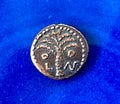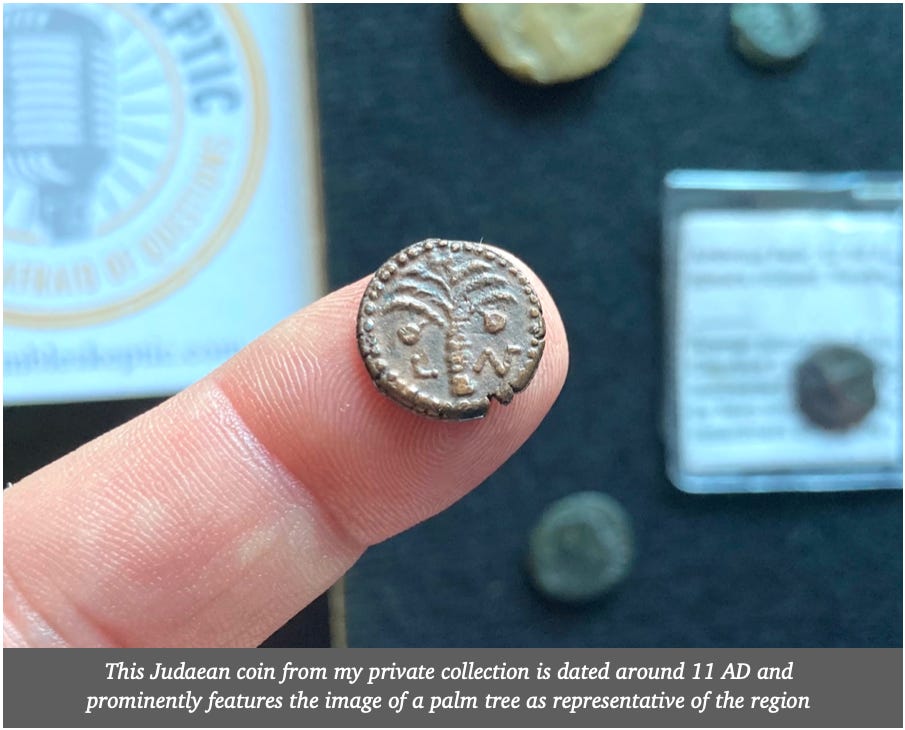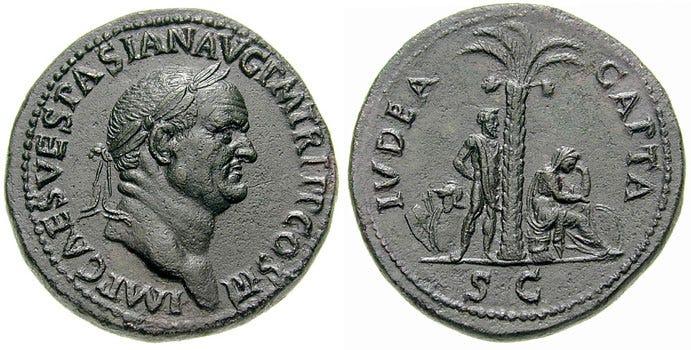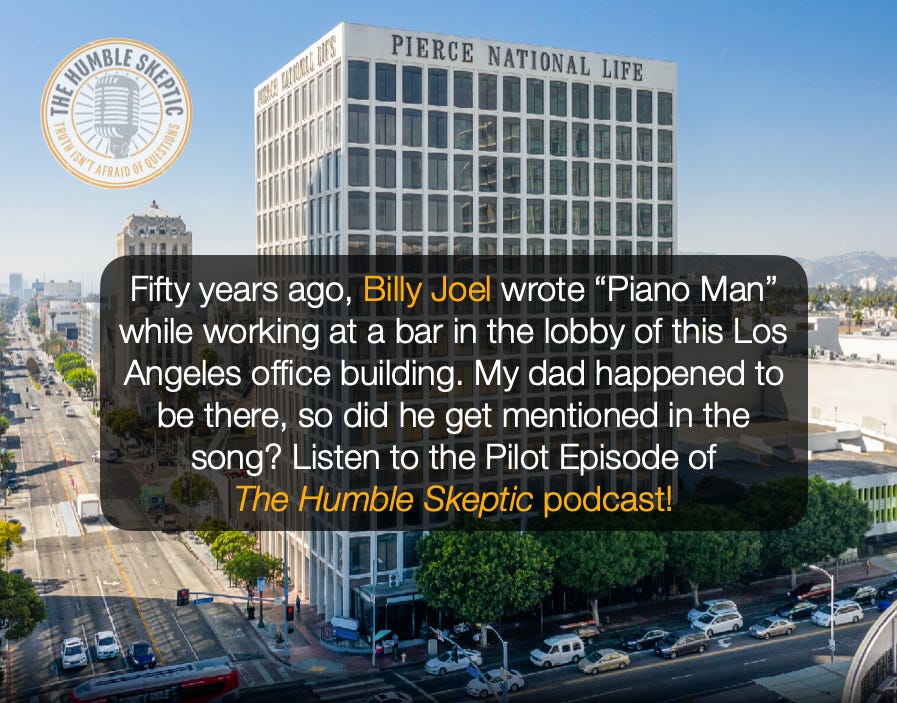Did Palm Trees Grow in Jerusalem at the Time of Jesus?
John is the only Gospel writer who specifically mentions the use of "palm branches" during Jesus' triumphal entry, but is this botanical detail accurate for that time and place?
Over the past few months on The Humble Skeptic podcast, I’ve been exploring all kinds of details in the Gospels that point to their authenticity. And since we just celebrated Palm Sunday, I thought I’d point out an interesting detail in John’s Gospel that you may have overlooked.
Though all four Gospels record Jesus’ triumphal entry into Jerusalem, John is the only one who mentions the fact that the crowds “took branches of palm trees and went out to meet him” (Jn 12:13). Though Matthew and Mark do record the gathering of “branches,” neither provides much detail as to the kind of tree or plant this was. Once again, John’s specificity allows us to put him to the test. Were palm trees native to the Jerusalem area in the early part of the first century?
According to Rudolph Bultmann, they weren’t. In his 1941 commentary on John, Bultmann makes the claim that, “in Jerusalem there were no palm trees, from which the pilgrims would have had to cut the palm branches” (The Gospel of John: A Commentary, p. 417). And Craig Keener in his 2003 commentary (which has the exact same title as Bultmann’s) argues similarly that “such palm branches would have to be brought from Jericho” (The Gospel of John: A Commentary, Vol. 2, p. 869). This suggestion by Keener ignores the fact recorded by both Matthew and Mark that the people who gathered to see Jesus as he made his way down the Mount of Olives “cut” branches from the nearby trees (Mt. 21:8, Mk 11:8) in order to celebrate his triumphal entry.
So what are we to think about this claim that palm trees weren’t actually native to the Jerusalem area? Well, as happens, this simply isn’t true. Though palm trees were extremely plentiful in the region of Jericho, we do have evidence that these trees also grew in the area around Jerusalem before 70 AD. According to Nehemiah 8:14-15, when Jews began to resettle in their own land after the Babylonian captivity, they sent out a proclamation which said that the people of Jerusalem should, “Go out to the hills and bring branches of olive, wild olive, myrtle, palm, and other leafy trees to make booths” in order to celebrate the Feast of Tabernacles.
Centuries later, after the success of the Maccabean Revolt, which took place around 160 BC, Simon Maccabee entered Jerusalem “with thanksgiving, and branches of palm trees, and with harps, and cymbals…and songs, because there was destroyed a great enemy out of Israel” (1Mac. 13:49-51). Describing events that took place a century before Christ’s birth, Josephus says that the Jews of that period brought “palm branches” to the Jerusalem Temple as part of their celebration of the Feast of Tabernacles (Ant. 13.13.5, cf. 3.10.4). Similarly, the Mishna records that “The townsfolk of Jerusalem bound up their palm branches with gold threads” as part of their celebration of this great feast. “At what point did they shake [them]?” Answer: “At ‘O give thanks unto the Lord’ (Ps. 118:1)…and at, ‘Save now, we beseech thee O Lord’” (Ps. 118:25; Mishna, Sukk. 3:8-11). What’s particularly intriguing is the fact that this is precisely the section of Scripture that all four Gospels writers say the crowd was chanting as Jesus made his way into Jerusalem. According to D.A. Carson:
The cry Hosanna!, originally a transliteration of Hebrew hosi a na (lit. ‘Give salvation now’), had come to be a term of acclamation or praise. Every Jew knew of its occurance in Ps. 118:25, for Psalm 118 is part of the Hallel (Pss. 113-118), sung each morning by the temple choir during the Feast of Tabernacles but also associated…with the Passover (D.A. Carson, The Gospel According to John, p. 432).
Some critics have argued that the waving of palm branches combined with the chanting of Ps. 118 seems to describe a Feast of Tabernacles context. But Carson is indeed correct; according to the Mishna, the Hallel also happened to be recited during the Feast of Passover (Pesahim 5:7, 9:3, 10:7). And as we’ve seen, waving palm branches was also associated with the celebration of a king’s homecoming (1Mac. 13:49-51), which certainly fits with the crowds messianic expectations, particularly in light of their collective cry, “Hosanna! Blessed is he who comes in the name of the Lord, even the King of Israel!” (Jn 12:13).
According to Josephus, the Roman forces eventually cut down all the trees in Jerusalem and the surrounding suburbs during the Jewish War of 70 AD (War 5.3.2, 5.6.2, 5.12.4, 6.1.1, 6.8.1), which perhaps explains why there aren’t as many date palms in or around Jerusalem at the present day. But when Vespasian ultimately conquered the Jewish capital, he minted his famous “Judea Capta” coin commemorating his victory, and as you can see in the image below, one side of this coin features the image of—you guessed it—a palm tree.
Shane Rosenthal is the founder and host of The Humble Skeptic podcast. He was one of the creators of the White Horse Inn which he also served as host from 2019-2021, and he received an M.A. in Historical Theology from Westminster Seminary in California.
FOR FURTHER READING
• Background info about the Judean Date Palm.
• Authenticating The Fourth Gospel, by Shane Rosenthal
• How to Detect Deception, by Shane Rosenthal
• Why Should We Believe the Bible?, by Shane Rosenthal





